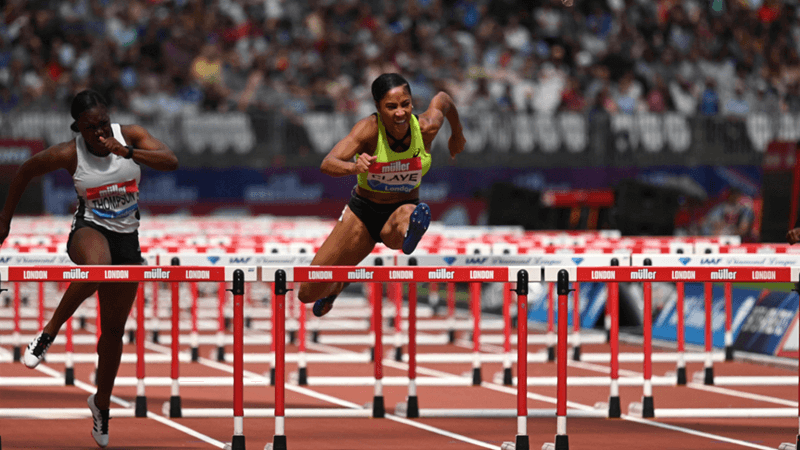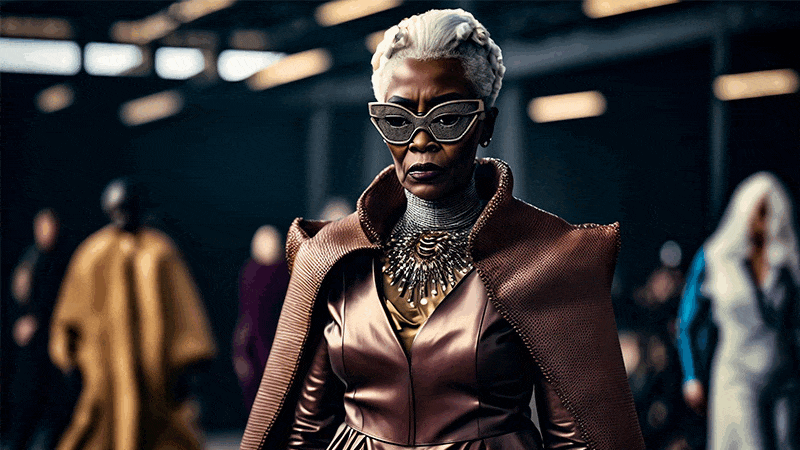“I’ve Been Sexualised In A Space I Didn’t Ask To Be” – Elite Athletes On The Fight To End Misogynistic Kit Design
“My eyes went down to the crotch area, and I honestly couldn’t believe the cut. I have competed for Team USA for quite a while, and I have never had a brief that was that revealing. I was kind of appalled.” American hurdler Queen Harrison Claye is describing her reaction to the reveal of the official Nike Team USA Olympic uniform. The super high-cut unitard caused a huge stir, with various athletes deeming it deeply inappropriate. Nike pointed out that the unitard was just one of various options – but why was something so revealing part of the line-up in the first place? As Harrison points out, “If I’m hurdling, it’s a recipe for something to slip out that has no business being on display on a world stage.”
Tess Howard, Great Britain hockey player, academic and founder of Inclusive Sportswear argues that there is “sexualisation and hyper-feminisation of kit” in various sports, citing “gymnastics, beach volleyball, camogie, netball and athletics” as major offenders. This stems, she says, from “women having to satisfy a particular feminine appearance to be allowed to partake in sport. There is a fear that if female athletes do not appear sexualised or feminised, the audience and market will fade. However, this is completely false, as evidenced by women’s football, rugby and cricket.”
The pushback by women athletes has been brewing for years. In 2021, Norwegian beach handball players – a sport synonymous with sexualised kit – protested by competing in thigh-length shorts rather than barely-there bikinis for the Euro tournament. They were fined €1,500 by the European Handball Association, which later updated its regulations from bikini bottoms to ‘short tight pants with a close fit’.
Stephanie Hilborne OBE, chief executive of the charity Women in Sport, says this debacle shone “a glaring light on the deeper issues of misogyny and the sexualisation women face in sport. The fact that these athletes were fined for simply opting for a more practical uniform speaks volumes about how pervasive gender biases are.”

Lipa Nessa is a British former semi-professional footballer and now activist and coach, who was unable to compete in her sport until a ban on head coverings was lifted by FIFA in 2014. But she says many young women – particularly young Muslim women – are still being deterred from entering sport because of kit. “Some groups feel uncomfortable, not represented and this may hinder the next generation of athletes,” she says. “If you can’t see it, you can’t be it.”
For Harrison-Claye, there is a clear double standard. “If smaller clothing gave you better results, they would make the men’s clothing smaller as well.” This historic prioritisation of aesthetics over functionality and comfort in women’s kit has had a troubling impact. “I have been sexualised in a space that I didn’t ask to be, especially as a woman, but even more so as a Black woman,” says Harrison-Claye. “No matter the uniform, the cut, the length, certain body shapes or demographics of people tend to get more unsolicited feedback about what they’re wearing and how they look in it.” It’s a sobering account that echoes the experiences of many sportswomen, including tennis star Serena Williams and basketballer Angel Reece.
There is consensus on what needs to change; “greater investment into design of kit that reflects the needs of women and prioritises comfort and performance,” says Hilborne. Howard, who has successfully campaigned for GB hockey players to be given the choice to wear shorts or skorts, as well as dresses, points to the need for collaboration with athletes. Harrison-Claye agrees: “I’ve had a plethora of apparel sponsors throughout my career, and we’ve talked about shoe technology, but we never have discussions about our uniforms – how to be aerodynamic but also comfortable and covered.”
There is a shift underway. In sports including swimming, table tennis, track and field and judo, athletes are allowed to compete internationally in headscarves, allowing greater Muslim participation. Although, while the International Olympic Committee will allow competitors to wear hijabs at athletes’ village at the 2024 Games, this doesn’t apply to the French team.
Following years of campaigning, team sports including football, rugby and cricket have moved from enforcing white shorts (problematic for menstruating women) to darker colours. German gymnasts have competed in full-length unitards since 2021. And for the first time in 2023, Wimbledon relaxed its famous all-whites rules to allow dark undershorts.
Harrison Claye describes the evolution of her own kit: “At high school, I wore the flappy shorts; at college, our shorts were tighter, but they were still shorts. It wasn’t until I got into my professional career that those panties were ever an option. You just saw women wearing them and thought it was a natural option at that level, but this whole thing has brought up the question of why we have the uniforms we have: what purpose do they serve? And what advancements in technology can be made to make us more efficient, not just look aesthetically pleasing to whoever is designing them?”
The fact these questions are still relevant in 2024 is a sad indictment on the treatment of women in sport. Let’s hope that by the time the 2028 Olympics roll around, they’re no longer necessary.
Laura Potter is a freelance editor, writer and interviewer whose work has appeared in The Observer Magazine, The Guardian’s Saturday magazine, The Times Magazine, Women’s Health and Men’s Health




